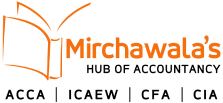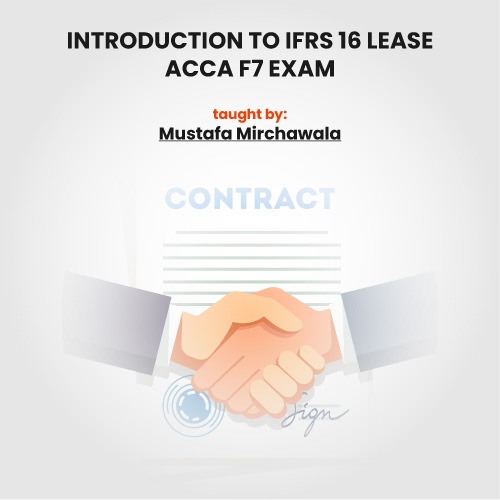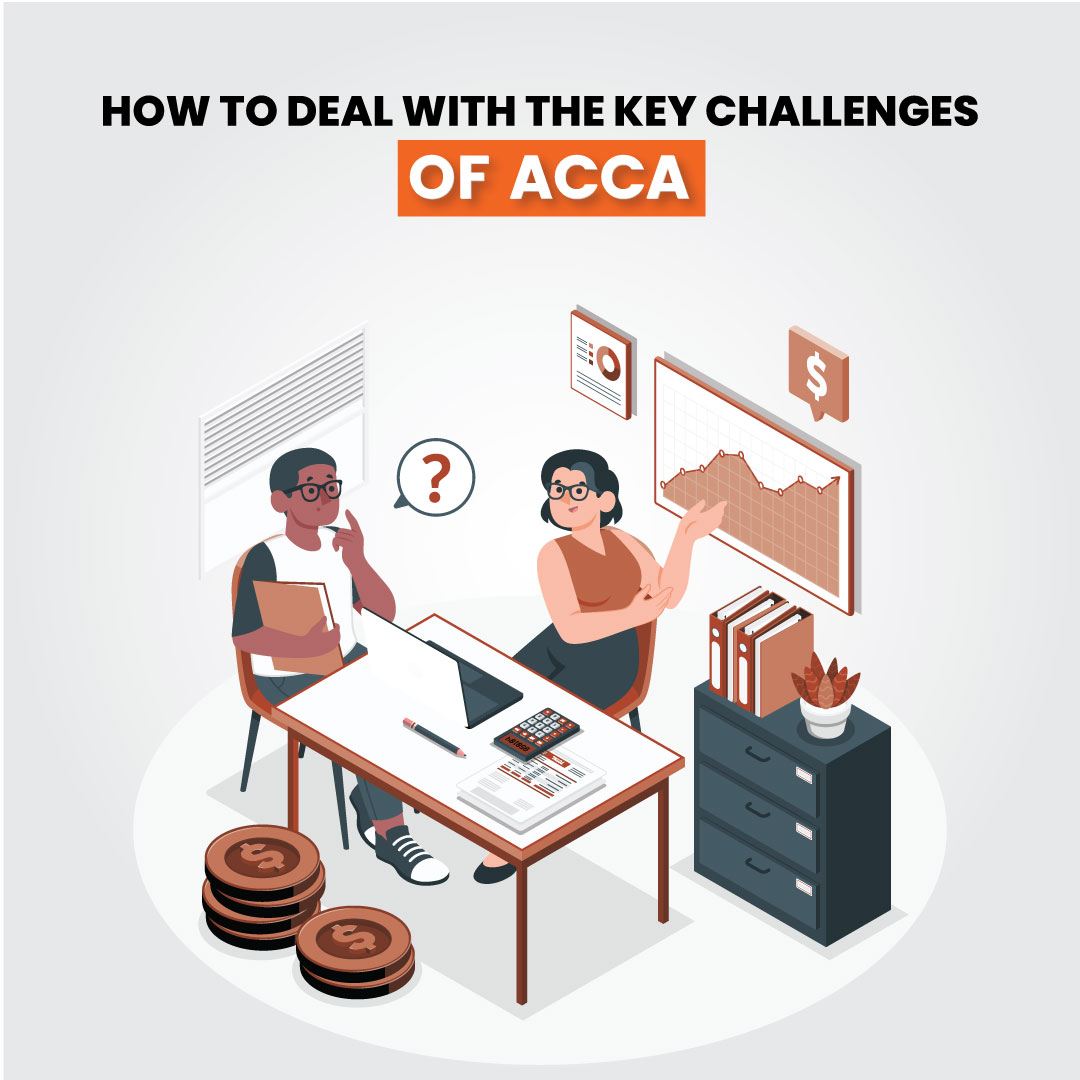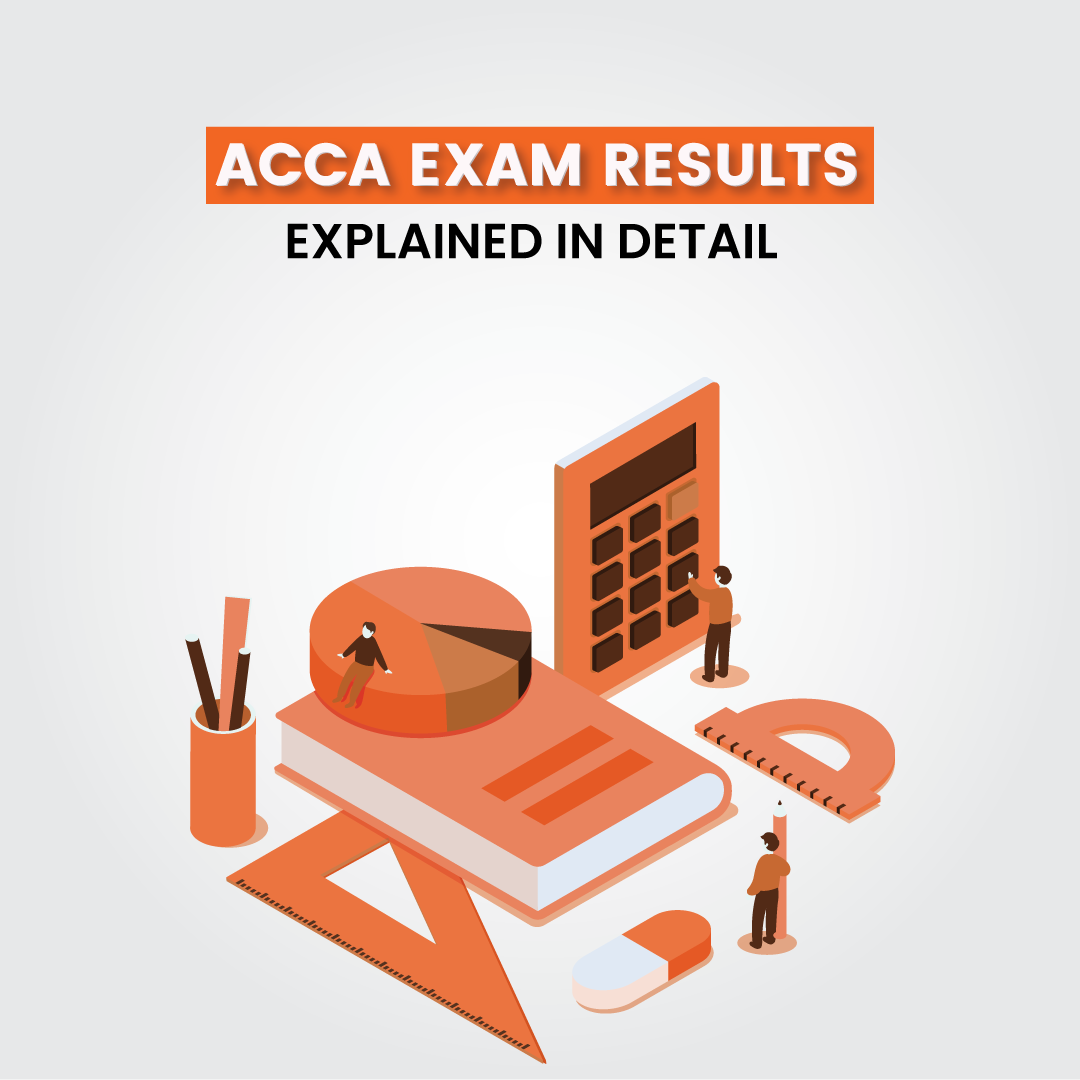“Dominate the ACCA F7 Exam: IFRS 16 Lease for Success-Your Ultimate Guide “
If we talk about IFRS 16 in simple words it is a “ rental agreement “
Introduction to lease – ACCA F7 EXAM
a contract by which one party conveys land, property, services, etc. to another for a specified time, usually in return for a periodic payment. It guarantees the lessee, also known as the tenant, use of the property and guarantees the lessor (the property owner or landlord) regular payments for a specified period in exchange. Leasing is an important and widely used financing solution. It enables companies to access and use property and equipment without incurring large cash outflows at the start.
The scope of IFRS 16
The scope of IFRS 16 is generally similar to IAS 17 and includes all contracts that convey the right to use an asset for a period of time in exchange for consideration, except for licenses of intellectual property granted by a lessor, rights held by a lessee under licensing agreements (such as motion picture films, video recordings, plays, manuscripts, patents, and copyrights), leases of biological assets, service concession agreements and leases to explore for or use minerals, oil, natural gas, and similar non-regenerative resources. There is an optional scope exemption for lessees of intangible assets other than the licenses mentioned above.
Changes in IFRS 16
This IFRS has been changed and the sooner you begin to comprehend the impact of the new standard on your company or as a student, the better prepared you will be to iron it out and deal with it in your exams . In old times there were two types of lease, you might be wondering that if this IFRS has changed then why am I reading the older version of it? well, in order to understand the new standard you should know its history to understand the fact that why there was a need for any change after all.
Finance lease -The first type of lease:
By long lease, means that you have bought the asset on loan.it is normally for the whole life of the asset. in the lease repairs and maintenance is the responsibility of the lessee(the party who has bought the asset on loan ). This lease is also known as a finance lease.
The accounting treatment of long/financial lease :
The accounting treatment for such transactions would be machine debit and financial lease obligation (loan)credit. if such a transaction is considered a loan then the payment of the lease is considered to be repayment of the loan. now if you remember repayment of a loan consists of two elements principal amount and interest expense therefore the accounting treatment of such lease is cash credit whereas loan or financial lease obligation debit along with interest expense is also recorded as debit entry.
Operating lease -The second type of lease:
This means that you have to rent the asset. As its name suggests it is for a short period of time and here the responsibility for maintenance is on the lessor. This lease is also known as an operating lease.
The accounting treatment of short/operating lease
The complete rent paid for the asset would be recorded as rent expense debit and cash credit. just treat the complete rental amount as rent expense. In the operating lease, we do not show any obligation in our financial statement
Both of the above lease structures were related to the old IFRS 16
Note: at the stage of financial reporting ACCA exam there are only lessee books dealing with IFRS 16
New International Financial Accounting Standard 16
IFRS 16 is an International Financial Reporting Standard (IFRS) promulgated by the International Accounting Standards Board (IASB) providing guidance on accounting for leases. IFRS 16 was issued in January 2016 and is effective for most companies that report under IFRS since 1 January 2019.
The operating lease was completely changed and established a new rule which states that from now on all leases will be treated as finance leases. But there are some exceptions where you will not record the lease as a finance lease rather they will be treated as an operating lease,
- Lease with a lease term of less than 12 months
- Low-value asset
Initial entry under IFRS 16
The accounting treatment under the new IFRS 16 launched requires recording the lease as Right of use debit and lease obligation credit. you might be wondering with what amount? well the lease obligation will be recorded at the present value of future cash flows
Lease amortization schedule
This schedule would require the following things:
- Date
- Rentals
- Finance charge
- Principal amount
- Balance obligation
Classification of current/non-current liability
Out of the balance obligation, some amount will be considered as a current liability whereas the rest of the amount will recorded under the head of non-current liability. on year-end. see the next year’s principal amount and balance obligation then report the current and non-current liability of this year.
The principal amount paid next year will be classified as the current liability of this year whereas the balance obligation for the next year will be classified as noncurrent liability of this year. that’s why it is important to make a lease amortization schedule in the first place cause it will help you to classify year-end liability as short-term and long-term liability
Depreciation for the asset bought on lease
Remember to record the depreciation. the estimated useful life will be be same as the amount of time for which you have leased the asset. Therefore with interest expense depreciation expense would also be booked in the profit and loss statement. the amount used to calculate the depreciation would be the right-of-use amount which we used to record the initial entry.
Treatment of assets in the statement of financial position (SOFP)
We have studied how liabilities will be recorded in SOFP and how we will do their classification under current and non-current liability. we also studied the treatment of interest expense and depreciation expense, both of these things will be recorded in the income statement. Now what about the asset recorded in the balance sheet under the head of noncurrent assets?
it will be treated in the balance sheet with the amount as original present value of cash flows of the asset minus depreciation expense per annum. the net amount would be used to record the asset under the head of non-current as the right of use. Remember IAS 16? The same treatment is being applied here on right-for-use asset
What if the first payment is now?
If you pay the first installment of your loan at the time of acquiring the loan then this will be treated as a pure decrease in loan and no interest is charged under such conditions. the accounting treatment will be very simple lease obligation debit and cash credit
When to book accrued interest?
Firstly let us understand that accrued interest is the interest that we have used but have not yet paid for. when we pay our rental after the year ends then accrued interest will be booked and the accounting entry will be interest expense debit and accrued expense credit. this accrued interest is our current liability
Initial direct cost by lease in lease
The expense which is done by lease in the lease is known as an initial direct cost. Such cost will be capitalized and will not be recorded as profit and loss expense
Initial Measurement of the Right of Use Asset:
Here the Initial Measurement of the Right of Use Asset means that what cost will be included in ROU .At the commencement date, the right-of-use asset is measured at cost. This comprises:
(a) The amount of the initial measurement of the lease liability. Remember the present value of future cash flow we calculated earlier this is what they are talking about here.
(b) Any lease payments made before the commencement date, less any lease incentives received. for example when I buy the asset on lease and in return, I receive any present or incentives then the amount of incentive will be deducted from the asset cost
(c) Any initial direct costs incurred by the lessee. This has been mentioned above in this blog
(d) Any costs that the lessee will incur for dismantling and removing the underlying asset or restoring the. the one who did the damage will compensate for its
site at the end of the lease term. if you have read the concept of compulsory disposal cost then you will know that the asset element is depreciated whereas the the obligation event is unwinded
Frequently asked questions (FAQ’s)
Q1. In simple terms, what is IFRS 16 primarily about?
IFRS 16 is primarily about accounting for rental agreements
Q2. What were the two types of leases in the past under the old IFRS?
The two types were long leases (finance leases) and short leases (operating leases)
Q3. How was a long/financial lease accounted for?
It was recorded as a machine debit and a financial lease obligation (loan) credit, with interest expense included.
Q4. What was the accounting treatment for a short/operating lease?
The complete rental payment was recorded as a rent expense debit and cash credit, with no obligation shown in the financial statements.
Q5. What significant change did IFRS 16 introduce regarding operating leases?
IFRS 16 mandates that all leases be treated as finance leases, except for certain exceptions like leases with terms of less than 12 months or involving low-value assets.
Q6. How is the initial entry for a lease under IFRS 16 recorded?
– The lease is recorded as a Right of Use debit and a lease obligation credit, with the obligation amount being the present value of future cash flows.
Q7. What information does a lease amortization schedule include?
– It includes date, rentals, finance charges, principal amounts, and balance obligations, helping classify current and non-current liabilities.
Q8. How is depreciation calculated for an asset leased under IFRS 16?
– Depreciation is calculated based on the useful life of the leased asset, using the right-of-use amount recorded initially.
Q9. How is the asset treated in the Statement of Financial Position (SOFP)?
The asset is recorded in the SOFP as the original present value of cash flows minus annual depreciation expense
Q10. What happens when the first payment is made at the time of acquiring the lease?
It is treated as a decrease in the lease obligation, with a simple accounting entry of lease obligation debit and cash credit.
Q11. When is accrued interest booked in the accounting records?
Accrued interest is booked when rental payments are made after the year ends, with an accounting entry of interest expense debit and accrued expense credit.
Q12. How are initial direct costs related to the lease treated?
Initial direct costs are capitalized and not recorded as a profit and loss expense.
Q13. What does the initial measurement of the Right of Use Asset include?
It includes the initial measurement of the lease liability, lease payments made before the commencement date (minus incentives received), initial direct costs, and costs for dismantling and removing the asset or restoring the site.
Q14. What is the purpose of including costs for dismantling and removing the asset in the initial measurement of the Right of Use Asset?
These costs account for the lessee’s obligation to restore the site at the end of the lease term, ensuring proper accounting treatment.
Written by Warisha Shehzadi student of Mirchawala’s Hub Of Accountancy









[…] 10- Events After The Reporting Period This article was Read more September 30, […]
[…] 10- Events After The Reporting Period This article was Read more September 30, […]
[…] 10- Events After The Reporting Period This article was Read more September 30, […]
Comments are closed.